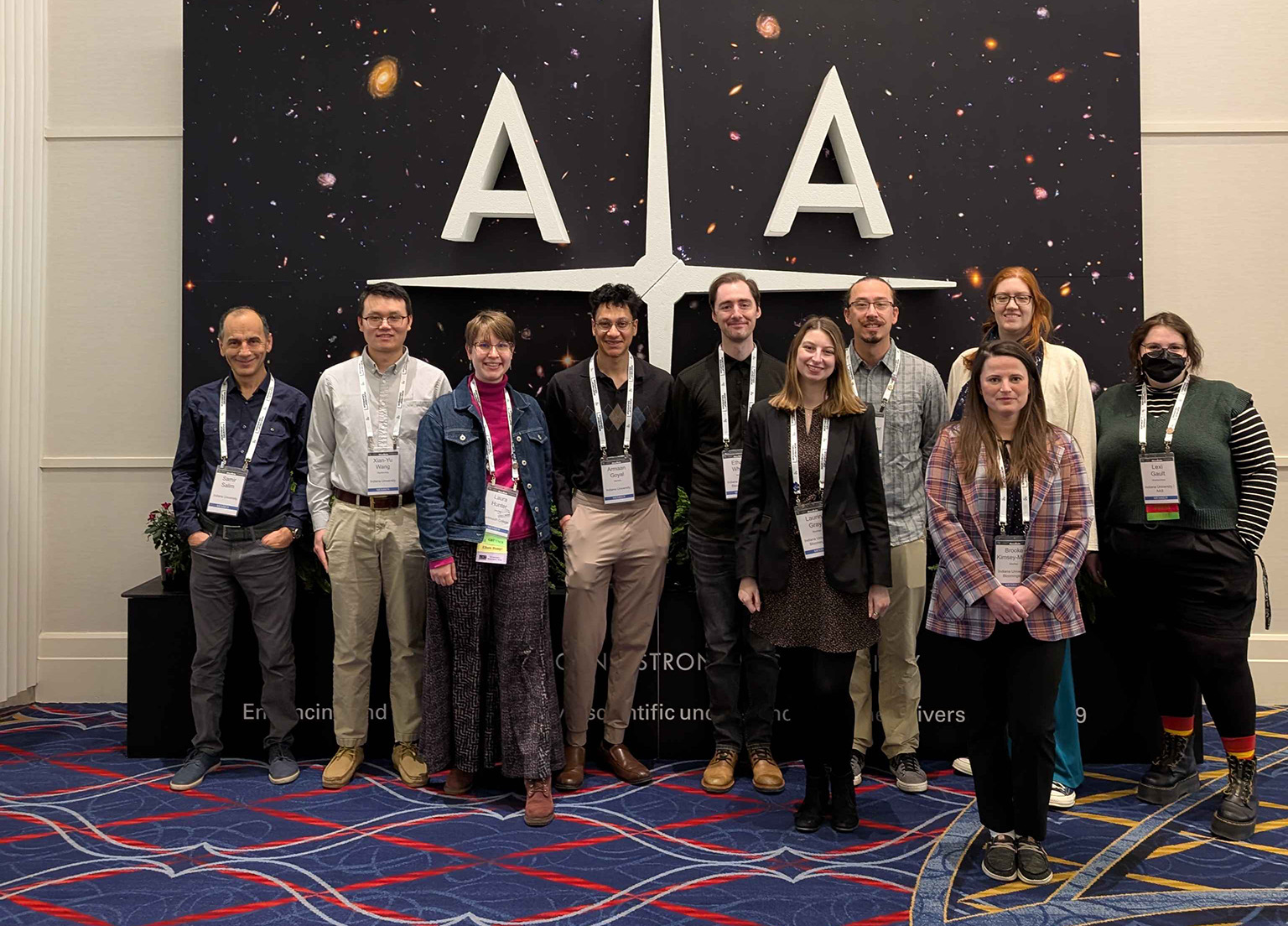January is the traditional time of the largest gathering of American astronomers, and IU was well represented this year at the American Astronomical Society’s Winter Meeting in National Harbor, MD. Current members of the department attending included Professor Samir Salim, Postdoc Xian-Yu Wang, and graduate students Lexi Gault, Armaan Goyal, Laurin Gray, Brooke Kimsey-Miller, and Ethan White. They were joined by IU alumni Samantha Brunker (Ph.D. 2022 ), Karna Desai (Ph.D. 2017), Alec Hirschauer (Ph.D. 2016), Laura Hunter (Ph.D. 2023), and Jennifer Sieben (Ph.D. 2022).
Graduate students Armaan Goyal, Laurin Gray, Brooke Kimsey-Miller each presented dissertation talks at the meeting.
Armaan described his statistical analyses of the architectures of planetary systems containing multiple planets smaller than Neptune in size. These comprise the most common type of system in the Milky Way. Based on his analyses, he was able to generalize many of the properties of these systems, as well as present new trends that may assist in constraining the nature of their formation and evolution.
Laurin spoke on the rotational evolution and radii of pre-main sequence stars. Investigating the angular momentum evolution of T Tauri stars provides important insight into the interactions between Sun-like stars and their protoplanetary disks, and the timescales that govern disk dissipation and planet formation. Laurin presented her analysis of hundreds of low-mass stars in five young open clusters with ages ranging from 1 to ~15 Myr.
Brooke utilized a subset of star-forming galaxies (SFGs) detected by the Star Formation Across Cosmic Time (SFACT) Survey to study possible environmental dependence on the star-formation activity within SFACT star forming galaxies out to a redshift of 0.5 (equivalent to a look-back time of 5 Gyrs). She presented her initial insights into the role that galactic environment plays on the activity in SFACT galaxies.
Ethan spoke on the dynamics of multiple stellar populations in rotating globular clusters, examining the evolution of mass density, rotation velocity, and angular momentum of multiple populations in globular clusters using n-body simulations.
Xian-Yu’s presentation highlighted six new Rossiter-McLaughlin measurements, primarily from the NEID spectrograph on the WIYN 3.5m telescope, confirming alignment in all studied single-star warm-Jupiter systems and suggesting that the lack of a Teff−λ dependency, unlike in hot-Jupiter systems, indicates misalignments stem from post-formation processes.
In an iposter, Samir described a new method for selecting galaxies recently undergoing a burst of star formation using the GALEX-SDSS-WISE Legacy Catalog.
 From Left to Right: Samir Salim, Xian-Yu Wang, Laura Hunter, Armaan Goyal, Ethan White, Laurin Gray, Alec Hirschauer, Brooke Kimsey-Miller, Jennifer Sieben, and Lexi Gault.
From Left to Right: Samir Salim, Xian-Yu Wang, Laura Hunter, Armaan Goyal, Ethan White, Laurin Gray, Alec Hirschauer, Brooke Kimsey-Miller, Jennifer Sieben, and Lexi Gault.


 The College of Arts
The College of Arts